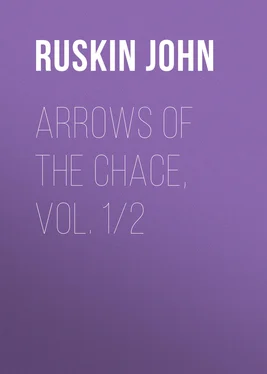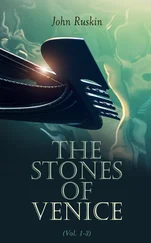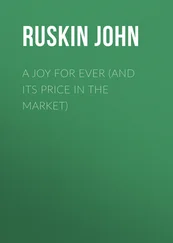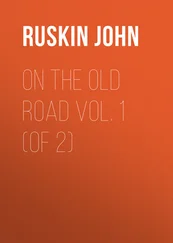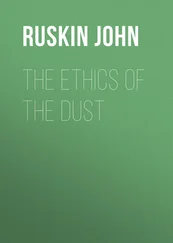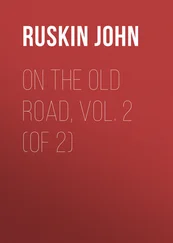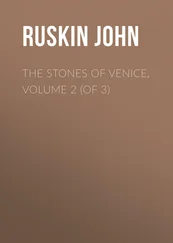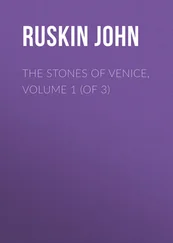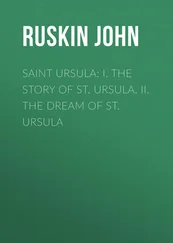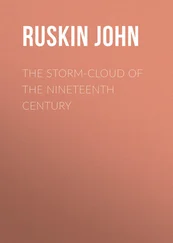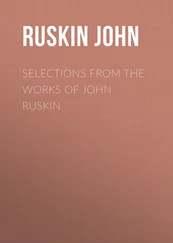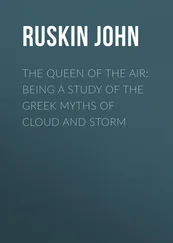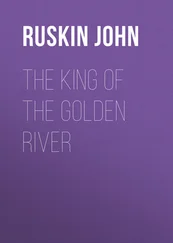John Ruskin - Arrows of the Chace, vol. 1/2
Здесь есть возможность читать онлайн «John Ruskin - Arrows of the Chace, vol. 1/2» — ознакомительный отрывок электронной книги совершенно бесплатно, а после прочтения отрывка купить полную версию. В некоторых случаях можно слушать аудио, скачать через торрент в формате fb2 и присутствует краткое содержание. Жанр: Биографии и Мемуары, literature_19, foreign_antique, на английском языке. Описание произведения, (предисловие) а так же отзывы посетителей доступны на портале библиотеки ЛибКат.
- Название:Arrows of the Chace, vol. 1/2
- Автор:
- Жанр:
- Год:неизвестен
- ISBN:нет данных
- Рейтинг книги:5 / 5. Голосов: 1
-
Избранное:Добавить в избранное
- Отзывы:
-
Ваша оценка:
- 100
- 1
- 2
- 3
- 4
- 5
Arrows of the Chace, vol. 1/2: краткое содержание, описание и аннотация
Предлагаем к чтению аннотацию, описание, краткое содержание или предисловие (зависит от того, что написал сам автор книги «Arrows of the Chace, vol. 1/2»). Если вы не нашли необходимую информацию о книге — напишите в комментариях, мы постараемся отыскать её.
Arrows of the Chace, vol. 1/2 — читать онлайн ознакомительный отрывок
Ниже представлен текст книги, разбитый по страницам. Система сохранения места последней прочитанной страницы, позволяет с удобством читать онлайн бесплатно книгу «Arrows of the Chace, vol. 1/2», без необходимости каждый раз заново искать на чём Вы остановились. Поставьте закладку, и сможете в любой момент перейти на страницу, на которой закончили чтение.
Интервал:
Закладка:
[From the “Artist and Amateur’s Magazine” (edited by E. V. Rippingille), January, 1843, pp. 280-287.]
ART CRITICISM
To the Editor of the “Artist and Amateur’s Magazine.”
Sir—Anticipating, with much interest, your reply to the candid and earnest inquiries of your unknown correspondent, Matilda Y., 13 13 This letter was written in reply to one signed “Matilda Y.,” which had been printed in the Artist and Amateur’s Magazine , p. 265, December, 1843, and which related to the opposite opinions held by different critics of the works of Turner, which were praised by some as “beautiful and profoundly truthful representations of nature,” whilst others declared them to be “executed without end, aim, or principle.” “May not these contradictions,” wrote the correspondent, in the passage alluded to by Mr. Ruskin, “be in a great measure the result of extreme ignorance of art in the great mass of those persons who take upon themselves the office of critics and reviewers? Can any one be a judge of art whose judgment is not founded on an accurate knowledge of nature? It is scarcely possible that a mere knowledge of pictures, however extensive, can qualify a man for the arduous and responsible duties of public criticism of art.”
I am led to hope that you will allow me to have some share with you in the pleasant task of confirming an honest mind in the truth. Subject always to your animadversion and correction, so far as I may seem to you to be led astray by my peculiar love for the works of the artist to whom her letter refers, I yet trust that in most of the remarks I have to make on the points which have perplexed her, I shall be expressing not only your own opinions, but those of every other accomplished artist who is really acquainted—and which of our English masters is not?—with the noble system of poetry and philosophy which has been put forth on canvas, during the last forty years, by the great painter who has presented us with the almost unparalleled example of a man winning for himself the unanimous plaudits of his generation and time, and then casting them away like dust, that he may build his monument—ære perennius.
Your correspondent herself, in saying that mere knowledge of pictures cannot qualify a man for the office of a critic, has touched the first source of the schisms of the present, and of all time, in questions of pictorial merit. We are overwhelmed with a tribe of critics who are fully imbued with every kind of knowledge which is useful to the picture-dealer, but with none that is important to the artist. They know where a picture has been retouched, but not where it ought to have been; they know if it has been injured, but not if the injury is to be regretted. They are unquestionable authorities in all matters relating to the panel or the canvas, to the varnish or the vehicle, while they remain in entire ignorance of that which the vehicle conveys. They are well acquainted with the technical qualities of every master’s touch; and when their discrimination fails, plume themselves on indisputable tradition, and point triumphantly to the documents of pictorial genealogy. But they never go quite far enough back; they stop one step short of the real original; they reach the human one, but never the Divine. Whatever, under the present system of study, the connoisseur of the gallery may learn or know, there is one thing he does not know—and that is nature. It is a pitiable thing to hear a man like Dr. Waagen, 14 14 Gustav Friedrich Waagen, Director of the Berlin Gallery from 1832 until his death in 1868. He was the author of various works on art, amongst them one entitled “Works of Art and Artists in England” (London, 1838), which is that alluded to here. The passage quoted concludes a description of his “first attempt to navigate the watery paths,” in a voyage from Hamburg to the London Docks (vol. i. p. 13). His criticism of Turner may be found in the same work (vol. ii. p. 80), where commenting on Turner’s “Fishermen endeavoring to put their fish on board,” then, as now, in the gallery of Bridgewater House (No. 169), and which was painted as a rival to the great sea-storm of Vandevelde, he writes, that “in the truth of clouds and waves” … it is inferior to that picture, compared with which “it appears like a successful piece of scene-painting. The great crowd of amateurs, who ask nothing more of the art, will always far prefer Turner’s picture.” Dr. Waagen revised and re-edited his book in a second, entitled, “Treasures of Art in Great Britain” (1854), in which these passages are repeated with slight verbal alterations (vol. i. p. 3, vol. ii. p. 53). In this work he acknowledges his ignorance of Turner at the time the first was written, and gives a high estimate of his genius. “Buildings,” he writes, “he treats with peculiar felicity, while the sea in its most varied aspects is equally subservient to his magic brush ”!! He adds, that but for one deficiency, the want of a sound technical basis, he “should not hesitate to recognize Turner as the greatest landscape painter of all time”! With regard, however, to the above-named picture, it may be remembered that Mr. Ruskin has himself instanced it as one of the marine pictures which Turner spoiled by imitation of Vandevelde (“Pre-Raphaelitism,” p. 45).
about to set the seal of his approbation, or the brand of his reprobation, on all the pictures in our island, expressing his insipid astonishment on his first acquaintance with the sea. “For the first time I understood the truth of their pictures (Backhuysen’s and Van de Velde’s), and the refined art with which, by intervening dashes of sunshine, near or at a distance, and ships to animate the scene , they produce such a charming variety on the surface of the sea.” For the first time!—and yet this gallery-bred judge, this discriminator of colored shreds and canvas patches, who has no idea how ships animate the sea, until—charged with the fates of the Royal Academy—he ventures his invaluable person from Rotterdam to Greenwich, will walk up to the work of a man whose brow is hard with the spray of a hundred storms, and characterize it as “wanting in truth of clouds and waves”! Alas for Art, while such judges sit enthroned on their apathy to the beautiful, and their ignorance of the true, and with a canopy of canvas between them and the sky, and a wall of tradition, which may not be broken through, concealing from them the horizon, hurl their darkened verdicts against the works of men, whose night and noon have been wet with the dew of heaven—dwelling on the deep sea, or wandering among the solitary places of the earth, until they have “made the mountains, waves, and skies a part of them and of their souls.”
When information so narrow is yet the whole stock in trade of the highest authorities of the day, what are we to expect from the lowest? Dr. Waagen is a most favorable specimen of the tribe of critics; a man, we may suppose, impartial, above all national or party prejudice, and intimately acquainted with that half of his subject (the technical half) which is all we can reasonably expect to be known by one who has been trained in the painting-room instead of in the fields. No authority is more incontrovertible in all questions of the genuineness of old pictures. He has at least the merit—not common among those who talk most of the old masters—of knowing what he does admire, and will not fall into the same raptures before an execrable copy as before the original. If, then, we find a man of this real judgment in those matters to which his attention has been directed, entirely incapable, owing to his ignorance of nature, of estimating a modern picture, what can we hope from those lower critics who are unacquainted even with those technical characters which they have opportunities of learning? What, for instance, are we to anticipate from the sapient lucubrations of the critic—for some years back the disgrace of the pages of “Blackwood”—who in one breath displays his knowledge of nature, by styling a painting of a furze bush in the bed of a mountain torrent a specimen of the “high pastoral,” and in the next his knowledge of Art, by informing us that Mr. Lee “reminds him of Gainsborough’s best manner, but is inferior to him in composition”! 15 15 See the Preface to the second edition of “Modern Painters” (vol. i. p. xix., etc.) Frederick Richard Lee, R.A., died in June, 1879.
We do not mean to say anything against Mr. Lee; but can we forbear to smile at the hopeless innocence of the man’s novitiate, who could be reminded by them of landscapes powerful enough in color to take their place beside those of Rembrandt or Rubens? A little attention will soon convince your correspondent of the utter futility or falsehood of the ordinary critiques of the press; and there could, I believe, even at present, be little doubt in her mind as to the fitting answer to the question, whether we are to take the opinion of the accomplished artist or of the common newsmonger, were it not for a misgiving which, be she conscious of it or not, is probably floating in her mind—whether that can really be great Art which has no influence whatsoever on the multitude, and is appreciable only by the initiated few. And this is the real question of difficulty. It is easy to prove that such and such a critic is wrong; but not so, to prove that what everybody dislikes is right. It is fitting to pay respect to Sir Augustus Callcott, but is it so to take his word against all the world?
Интервал:
Закладка:
Похожие книги на «Arrows of the Chace, vol. 1/2»
Представляем Вашему вниманию похожие книги на «Arrows of the Chace, vol. 1/2» списком для выбора. Мы отобрали схожую по названию и смыслу литературу в надежде предоставить читателям больше вариантов отыскать новые, интересные, ещё непрочитанные произведения.
Обсуждение, отзывы о книге «Arrows of the Chace, vol. 1/2» и просто собственные мнения читателей. Оставьте ваши комментарии, напишите, что Вы думаете о произведении, его смысле или главных героях. Укажите что конкретно понравилось, а что нет, и почему Вы так считаете.
